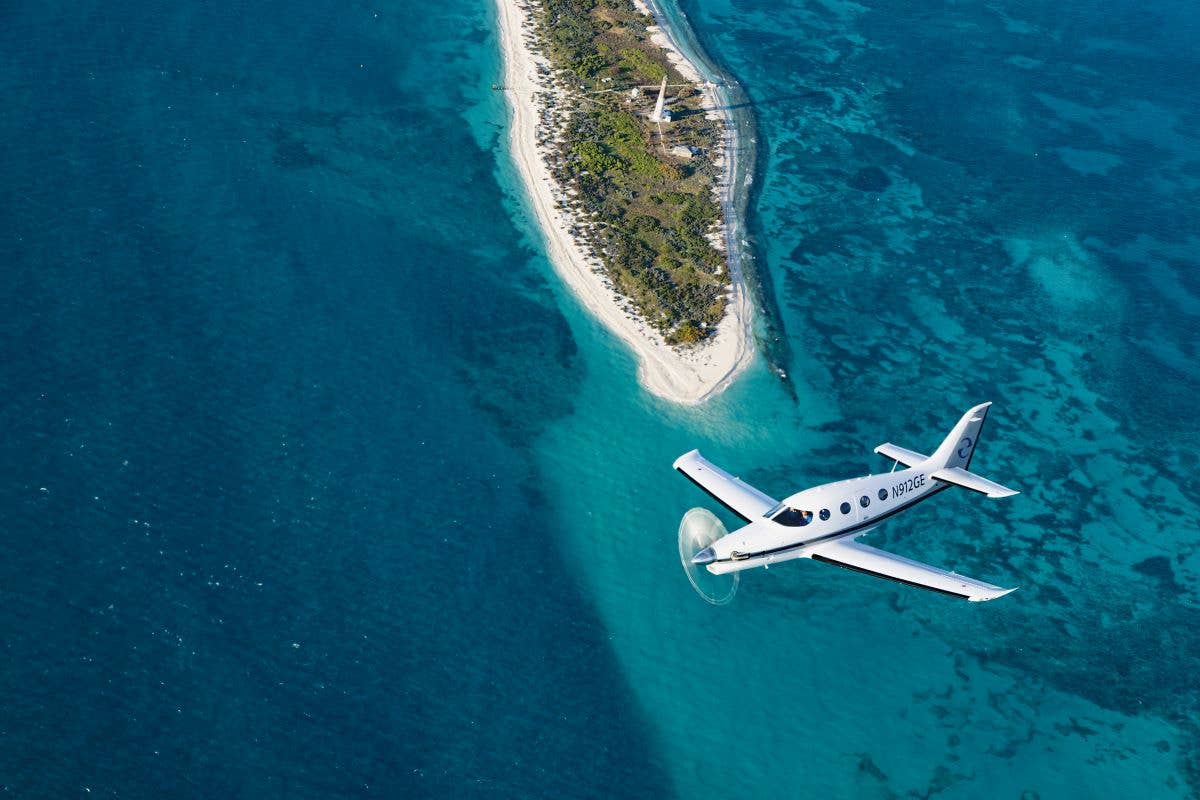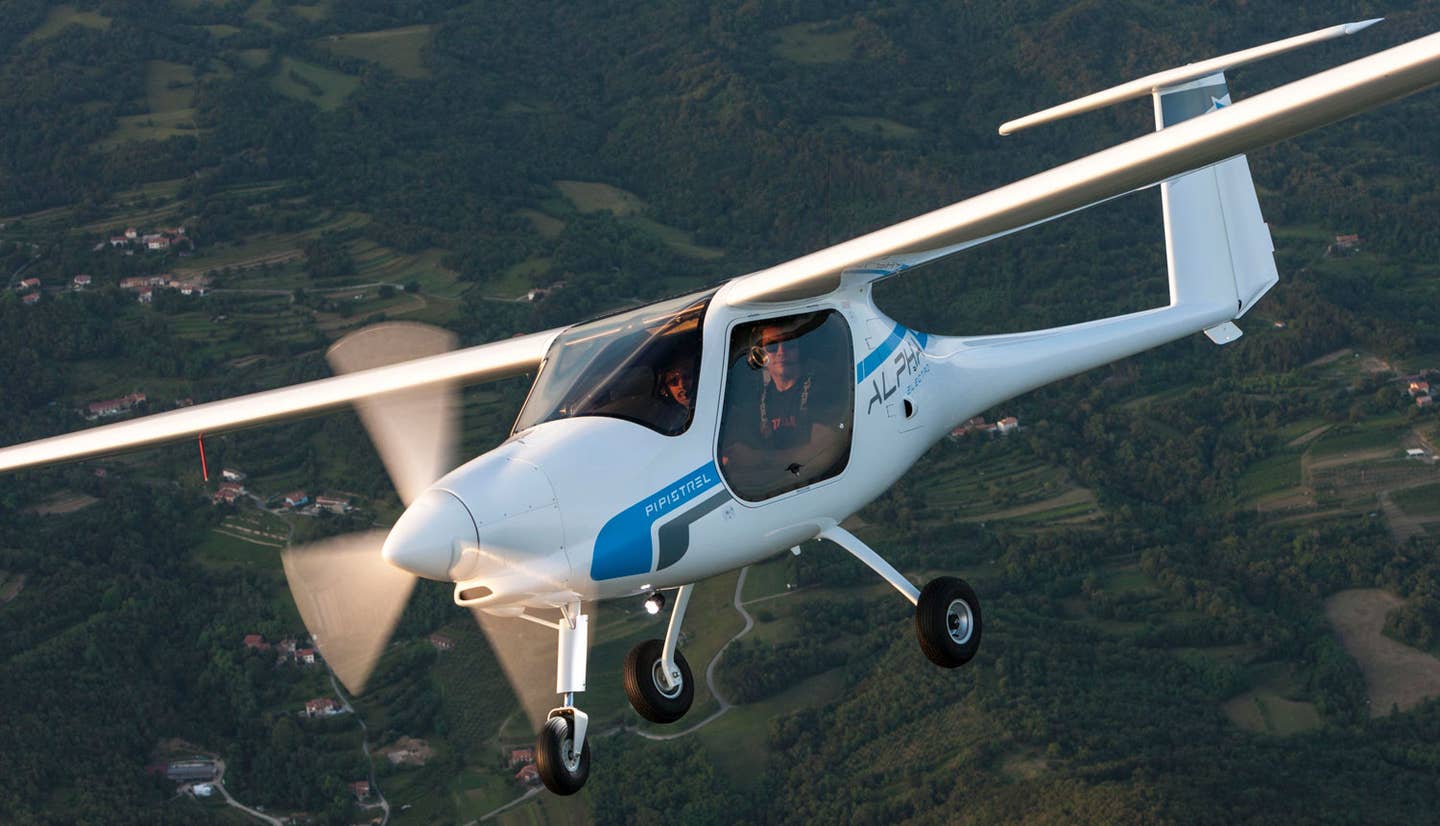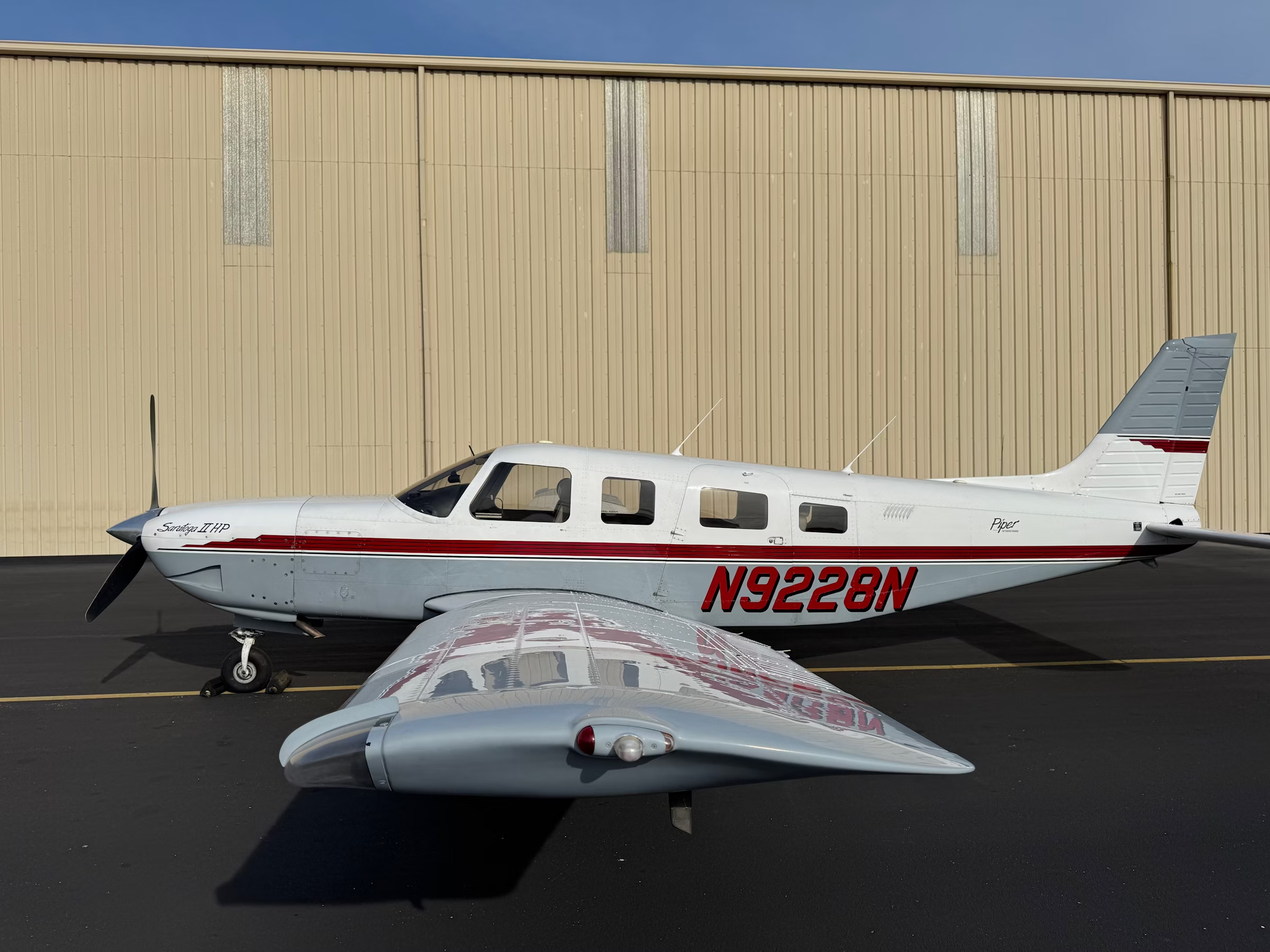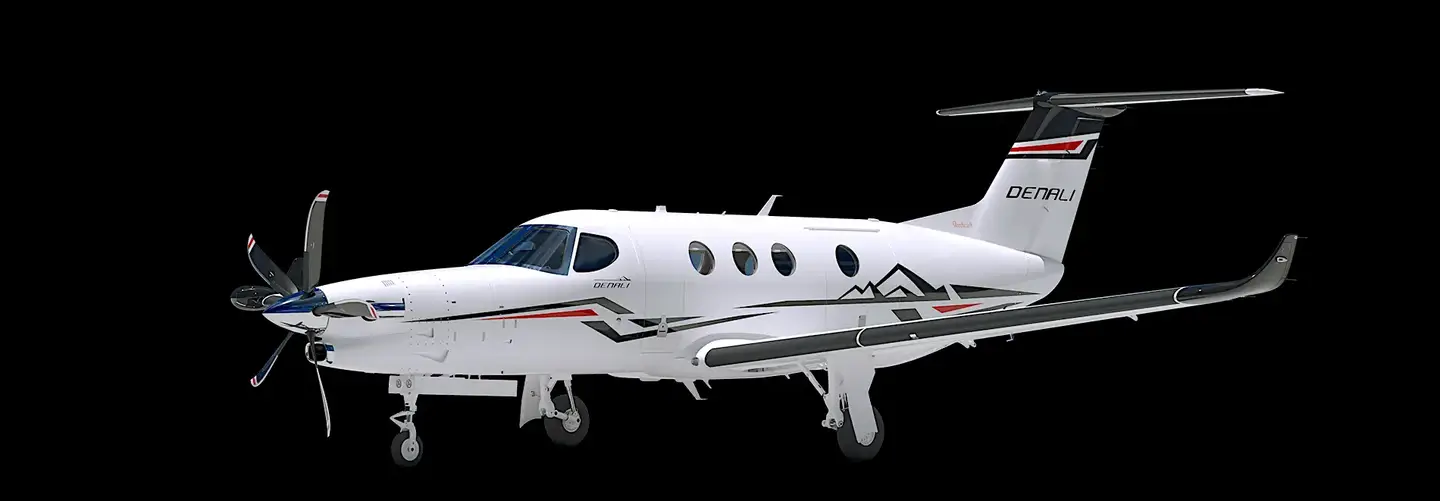We Fly: Epic Aircraft E1000 GX
A full-power turbine experience that sips fuel while it flies fast.

The Epic E1000 GX features 1,200 shaft horsepower Pratt & Whitney PT6A-67A engine and five-blade Hartzell prop. [Credit: Jim Barrett]
In order to prepare for the departure from an airport in a congested metro area, a pilot must have a plan, a way to feel as though they are orchestrating events as opposed to pushing the throttle forward and hanging on for the ride.
That’s even more important when the Epic E1000 GX you’re strapped into accelerates down the runway pulled by 1,200 jet-A-propelled horses and five blades cutting through the gummy Seattle air.
As we taxi out to the departure end of Runway 16 at the Renton Municipal Airport (KRNT), I check in with Epic Aircraft demo pilot Tony Paradis to assess if, by his countenance, he appears ready to engage his plan. I feel pretty good about mine, but it has been 15 years since I last flew an Epic—and that was an experimental LT version, crafted under the company’s factory-assist-build program in early 2007.
The Takeoff
We brief the Renton 3 Departure and the subsequent route to Bend Municipal Airport (KBDN) in Oregon, where Epic is based. There’s a heading we’re supposed to track—150 degrees—until 1,000 feet msl, then a left turn to 130 degrees for the remainder until given another heading on course or left to our own devices (literally). It seems to me like we’re going to blow through that first thousand feet quickly. I’m not wrong.
Lined up and ready—really ready—to go, I move the power lever forward and feel the incredible torque pulled by the Hartzell prop tractoring the 1,200 shaft horsepower (at takeoff power) Pratt & Whitney PT6A-67A engine. It takes a lot of right rudder to keep it on the centerline, which Paradis had briefed me on, but even being told to anticipate it, it still takes me a second to catch up. We lift off after using just over half the runway at nearly 1,000 pounds below the maximum takeoff weight of 8,000 pounds.
Indeed, we blow through 1,000 feet—after tucking up the gear and flaps—accelerating with a climb rate between 2,000 and 2,500 fpm. A power reduction to 89 percent torque and 90 gph fuel flow comes just a couple of minutes after departure when we’re already on our way through 5,000 feet msl, and with that—by necessity—the right rudder comes back out. The control authority granted by the large tail surface is crystal clear. Because we have folks in the back, we set the yaw damper on at this point as well—and the YD goes a long way to smoothing things out. The reduction keeps us below max continuous power, which is 1,000 shp and a prop speed of 1,700 rpm.
[Credit: Jim Barrett]
After continuing the climb between 2,900 and 3,500 fpm, we exit the Seattle Class B veil. I level off once we reach 27,000 feet, our filed altitude, and we enjoy a nice little tailwind—up to 32 knots—for most of the hour-long flight back to Bend. At FL 270, we clock about 325 ktas, burning about 58 gph at an average of ISA +17 Celsius. We originally showed a 45-minute flight, but opt to stop along the way to perform a few gentle maneuvers, to continue my introduction to the certified version of the E1000’s predecessor, the experimental category Epic LT that I first flew in 2006 and 2007. It’s a new model to be sure, somewhat tamed from the original—but still reverberatingly fast.
A. The Wedge annunciator panel tells us if we're ready to go—and an angle of attack gauge keeps us advised of the lift we have left.
B. The standby ESI-500 electronic instrument comes from L3Harris, and it incorporates a solid-state backup battery.
C. The Garmin G1000 NXi comes with two pilot and copilot displays: the GDU 1050 PFDs measure 10 inches and the GDU 1250 center display comes in at 12 inches.
D. The yaw damper, automatic trim, and coupled go-around capabilities come with the addition of the Garmin GFC 700 autopilot integrated into the G1000NXi in the GX mode.
A Long-Term Project
The LT was the brainchild of Epic’s engineering team in the early 2000s, with previous company leadership at the helm during the initial phase. Epic’s factory-assist-build program for the LT rode the wave of that process’s increasing popularity at the time—but it was a long road to get from the experimental version to the one that would secure an FAA Part 23 type certificate.
Yes, from 20 feet away, the LT and the E1000 GX look very similar, but a comprehensive list of changes and evolutions had to take place in the airframe, avionics, and components before certification could be achieved—which came to be in November 2019. And there have been upgrades to the model since that first one—the E1000—won FLYING’s Innovation Award in 2020, as we reported in the August 2020 issue. The GX gained its type certification in July 2021, just nine months later, and includes Hartzell’s composite propeller and the Garmin GFC 700 automated flight control system—fully integrated with the G1000 NXi flight deck up front. It takes the place of the Genesys Aerosystems S-Tec IntelliFlight 2100 autopilot originally included in the avionics package.
According to pilots who have flown both the original E1000 and the GX, the addition of the five-blade prop went a long way towards reducing noise and vibration both inside and outside the airplane.
Airwork
Back in Bend, Paradis and I took another flight the next day to ensure we captured a climb all the way to the E1000 GX’s maximum altitude of 34,000 feet msl from Bend’s field elevation of 3,459 feet—which took roughly 18 minutes, according to FlightAware. It gave us the opportunity to put the E1000 through a more aggressive maneuvers profile as well.
The engine start followed the checklist and buttons deftly organized in sequence on the left-hand subpanel, with the pilot managing the initialization procedures and finalizing their completion with a check of the Wedge annunciation panel on the upper left-hand corner of the flight deck before takeoff. Not only does the Wedge include the departure checklist annunciation system, it also presents the angle of attack indicator right in the pilot’s field of view.
We departed on Runway 34 at KBDN to the northwest, and after a chicane to keep us clear of Redmond’s airspace to the north, we were cleared to climb to FL 340 almost without interruption. A straight-line speed run demonstrated a top mark during our test of 0.53 Mach or 316 ktas at ISA +8 Celsius—the E1000 GX hits its sweet spot in speed around FL 260, but this still impressed me.
What climbs fast also descends like a freight train—since the flight levels weren’t ideal for maneuvers, we pushed N831VF into a steep descent, coursing down to 10,000 feet msl at upwards of 4,500 fpm at times. Time to kick off the enhanced stability protection on the G1000 and get rid of the “silent nudge” coaxing us back into straight and level. Our flight track then dipped into a series of steep turns, slow flight, and initial stall entries to help me understand the airplane’s handling and low-speed flight characteristics.
Roll response was sharp even as we came down through the top of the white arc at 130 kias—also best glide speed, reminding you this is a sleek airframe—with the AOA just tapping the top of the green range.
Return to Base
The GX has a maximum landing weight of 7,600 pounds—which means you need to burn off 400 pounds of fuel before returning if you take off at the MTOW of 8,000 pounds. The top end of the useful load is a stout 2,860 pounds, with a full-fuel load of 1,100 pounds.
You’re more likely to cube out the cabin with extra stuff, though it too leads the class at a width of 54.4 inches at its widest point behind the front two seats. The pitch distance between the rear club seats is a full 31.2 inches, giving a generous amount of legroom for those in the back.
An area of minor concern expressed by potential owners relates to the door—the closing of it is straightforward but a bit “fiddly,” and it lacks a side rail or other kind of assistance with which to leverage yourself up and inside. And the glass window set within the door—in an area that is likely the target of FOD from passengers stepping in without realizing the possible fragility of the photovoltaic dimming inset—may take a hit more readily, so it pays to treat it with care during use.
Operators we spoke to—who go by the philosophy to baby any powerplant—point out that a nice happy place lies snugly in the normal cruise settings, at an initial 83 percent torque down low, dropping off in the climb. This translates into about 311 ktas at FL 340, and an enviable balance between speed and economy—as low as 47 gph.
EPIC E1000 GX
Price (as tested): $4,190,000
Powerplant: Pratt & Whitney PT6A-67A, 1,200 shp
Propeller: Hartzell 5-blade composite, 105-in. diameter
Seats: 6
Length: 35 ft. 10 in.
Height: 12 ft. 6 in.
Cabin Width: 4 ft. 7 in.
Wingspan: 43 ft.
Baggage Volume:18 cu. Ft.
Fuel Capacity: 264 gal. usable
Max Takeoff Weight: 8,000 lb.
Useful Load: 2,860 lb.
Full Fuel Payload: 1,100 lb.
Max Rate of Climb: 4,000 fpm
Normal Cruise Speed/Fuel Burn: 49gph at 315 ktas, FL 340
Range: 1,560 nm
Max Cruise Speed: 333 ktas
Stall Speed (ldg config): 68 kias
Takeoff Distance (over a 50-ft. obs.): 2,254 ft.
Landing Distance (over a 50-ft. obs.): 2,399 ft.
This article was originally published in the December 2022/January 2023 Issue 933 of FLYING.

Sign-up for newsletters & special offers!
Get the latest FLYING stories & special offers delivered directly to your inbox






